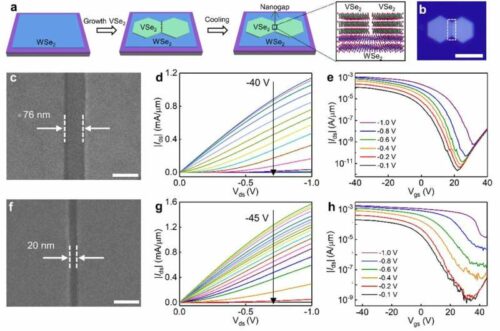Researchers developed 2D semiconductors using bilayer tungsten diselenide to provide high-performance transistors.

Researchers at Hunan University have invented high-performing transistors based on bilayer tungsten diselenide, an inorganic 2D compound with semiconducting properties. These 2D transistors are ultra-thin 2D metal to build high-quality field-effect transistors.
“Our results demonstrate for the first time that 2D transistors can deliver competitive current density at a comparable channel length and driving voltage when comparing to the traditional Si transistors,” Duan said. “It gave a positive answer to the long-standing question in the field of “whether 2D transistors can achieve comparable or better performance than the silicon transistors.”
Aggressive techniques are used for fabricating devices with ultrashort channels such as high-resolution lithography and metallization processes. There are also alternatives to these procedures such as undesired contaminations or damage to the anatomically thin 2DSCs, which can result in a compromise in the device’s electronic performance
“The obtained ultrashort channels are generally rather straight, distinct from lithographically defined electrodes that often exhibit finite line edge roughness, which creates a good condition for exploring the limit performance of WSe2 transistors,” Duan explained. “In addition, bilayer WSe2 materials typically have smaller bandgaps and better immunity to the fabrication induced damages or interfacial scattering, compared with their monolayer counterpart.”
“We believe the realization of the current density beyond the 1.5 mA/mm has made a positive answer to the long-standing question in the field of ‘whether 2D transistors can achieve comparable or better performance than the silicon transistors,'” Duan said. “It could inspire additional efforts from both the academic and industry community to promote the development of a new generation of 2D semiconductor and chip technology after silicon-based semiconductor.”
Click here for the Published Research Paper








